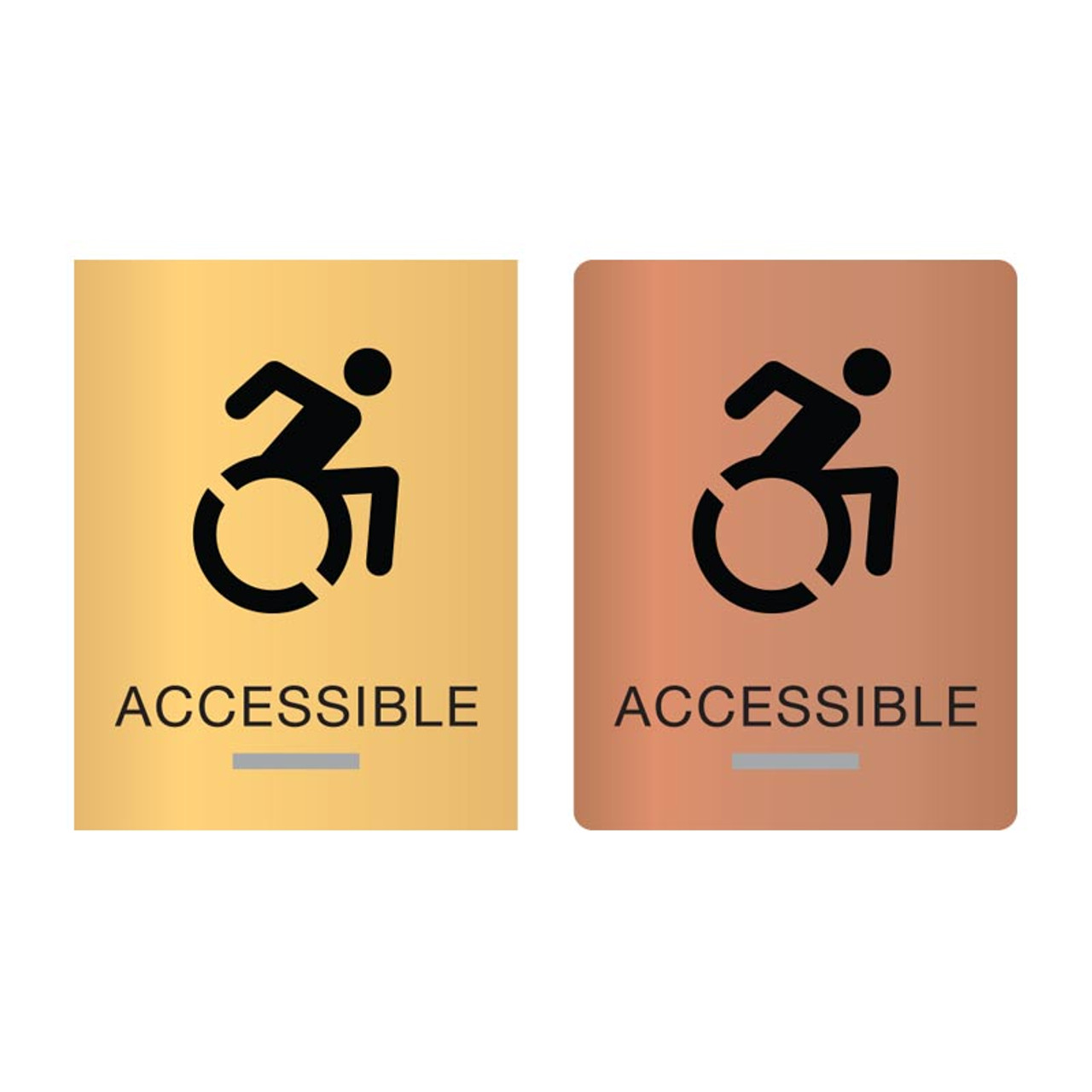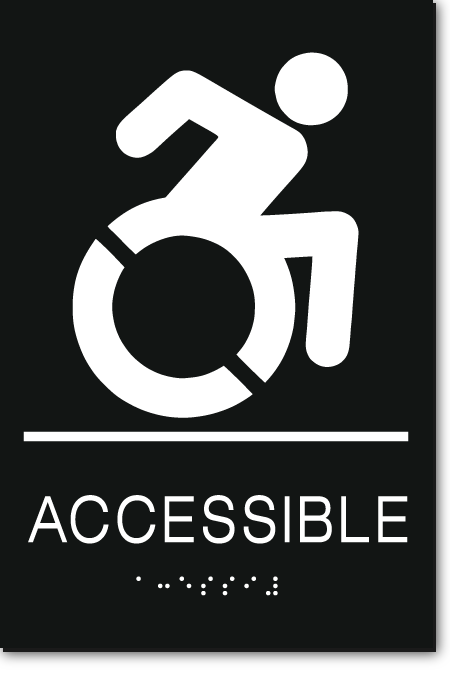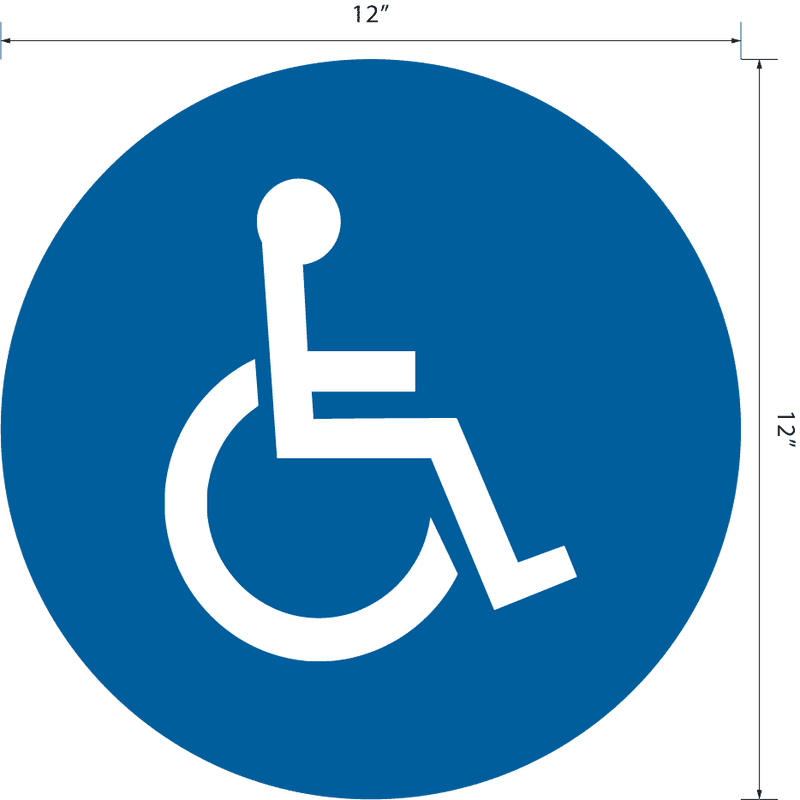Recognizing the Value of ADA Signs for Inclusive Environments
In a significantly diverse culture, the importance of ADA signs can not be overstated. These indicators are greater than simple conformity with legal criteria; they represent a commitment to access and inclusivity in exclusive and public areas. By incorporating features like tactile personalities and high-contrast visuals, ADA signage plays a crucial role in making sure equivalent access for individuals with specials needs. Nonetheless, the benefits prolong past lawful conformity and accessibility. Exactly how do these aspects change rooms into really inclusive atmospheres, and what effects does this have for businesses and communities dedicated to equal rights?
The Role of ADA Signage
ADA signs plays an essential role in guaranteeing ease of access and inclusivity in personal and public spaces. These signs are important in guiding individuals with handicaps, giving them with the essential details to browse settings individually and securely. The Americans with Disabilities Act (ADA) states particular guidelines for signs to make sure that individuals with visual, acoustic, or cognitive problems can access the exact same information as those without such obstacles.
The duty of ADA signage extends past simple compliance with legal needs; it symbolizes a commitment to equal rights and non-discrimination. By carrying out ADA-compliant signs, organizations and businesses show their commitment to developing atmospheres where everybody, despite their physical capacities, can take part totally and similarly. This is especially important in rooms like health centers, instructional establishments, and federal government structures, where access can directly influence an individual's health and ability to accessibility vital solutions.
Furthermore, ADA signs contributes to the general user experience by minimizing complication and improving wayfinding for all people. Clear, strategically put signs helps in handling foot website traffic, decreasing blockage, and boosting safety. Basically, ADA signs is a cornerstone of inclusive layout, facilitating an atmosphere where all people can browse and interact with their environments effectively.
Secret Parts of ADA Signs
Effective communication is at the heart of ADA signage, which includes numerous key components to guarantee availability for people with disabilities. One of the primary aspects is using responsive personalities, such as Braille and elevated letters, which permit people with visual impairments to read the indications with touch. The Braille needs to be Quality 2 and placed straight listed below the matching message.

An additional critical element is the placing location and elevation of the indicators. ADA laws define that indications need to be set up at a height that is available to all users, generally between 48 and 60 inches from the flooring. This makes sure that they are accessible for people in mobility devices or of differing heights.
Benefits for People and Services
While making sure availability via ADA signs is a legal requirement, it additionally offers substantial benefits for both individuals and businesses. For individuals, particularly those with impairments, ADA signage supplies important ease of access to public rooms.
For businesses, the execution of ADA signs can result in improved client fulfillment and loyalty. By demonstrating a commitment to availability, services can bring in a wider client base, including people with impairments and their families, who typically look for out inclusive atmospheres. Additionally, ADA compliance can protect organizations from possible lawful challenges and penalties related to non-compliance, guarding their track record and monetary stability.
Additionally, ADA signage can add to a favorable workplace atmosphere. Employees with handicaps gain from easily accessible navigating within their work spaces, promoting efficiency and morale (ADA Signs). Inevitably, investing in ADA signs not just fulfills lawful responsibilities however also enhances the inclusivity, online reputation, and operational success of businesses
Common Kinds Of ADA Signage
When talking about the numerous kinds of ADA signage, it is important to understand the details kinds that deal with various access requirements. ADA signage is designed to guarantee that individuals with specials needs can browse rooms safely and separately. A primary group includes tactile indications, which feature increased personalities and Braille. These signs are essential for visually damaged individuals, enabling them to determine rooms, departures, toilets, and other essential locations.
An additional considerable kind of ADA signage is directional indications. These offer clear guidance to various places within a facility, making certain that all individuals, consisting of those with movement problems, can conveniently find their way - ADA Signs. They often integrate symbols and high-contrast colors to boost presence and comprehension
Informative indicators are additionally important, using vital details concerning centers, such as running hours and policy guidelines. In addition, governing indicators share compulsory guidelines, like "No Smoking" or "Departure Path," making certain compliance with security procedures.
Finally, recognition indicators are utilized to identify areas and spaces, making it much easier for every person, regardless of capacity, to recognize details locations. These indicators commonly include pictograms to enhance universal understanding. Jointly, these typical kinds of ADA signage play a critical role in developing available and comprehensive settings.

Carrying Out Reliable Signage Solutions
Implementing reliable signs services needs a critical strategy to ensure access and compliance with additional info the ADA standards. Visit Website The procedure starts with a comprehensive assessment of the facility to determine the specific signage requires based on the environment's feature, design, and the population it serves. This evaluation ought to include considerations for both permanent and momentary signage, each calling for unique design and placement methods.
The choice of products and design components is critical. Signs should be made from resilient materials to withstand environmental aspects while making certain high visibility and clarity. Trick attributes such as contrasting colors, responsive components, and non-glare coatings are necessary to fit people with visual disabilities. In addition, the integration of Braille and increased personalities should adhere to ADA requirements to give equivalent accessibility.
Correct setup is the next important action in executing effective signage services. Indications need to be put at compliant elevations and locations to guarantee they are understandable and easily discoverable. Consistent review and upkeep of signs ensure continued compliance and performance. Engaging with availability experts throughout the planning and application stages can supply important understandings, guaranteeing that signage not just meets legal requirements but likewise enhances the inclusivity of the atmosphere.

Final Thought
ADA signs plays a crucial duty in producing comprehensive atmospheres by guaranteeing compliance with access guidelines and boosting navigation for all individuals. Secret elements such as responsive personalities, high-contrast layouts, and right mounting elevations are essential for reliable implementation. These components advertise non-discrimination, self-reliance, and equality, profiting both individuals with businesses and disabilities. By promoting much safer and more welcoming rooms, ADA signs underscores a commitment to inclusivity, eventually contributing to a more fair culture for every person.
By incorporating features like high-contrast visuals and tactile characters, ADA signage plays a critical function in making sure equal gain access to for people with handicaps. The Americans with Disabilities Act (ADA) sets forth specific standards for image source signage to make certain that people with visual, auditory, or cognitive disabilities can access the exact same details as those without such obstacles.
Efficient communication is at the heart of ADA signage, which integrates a number of key elements to make sure availability for people with specials needs.While ensuring accessibility with ADA signs is a lawful need, it additionally uses significant benefits for both people and companies. ADA signs is made to make certain that people with handicaps can navigate spaces safely and individually.